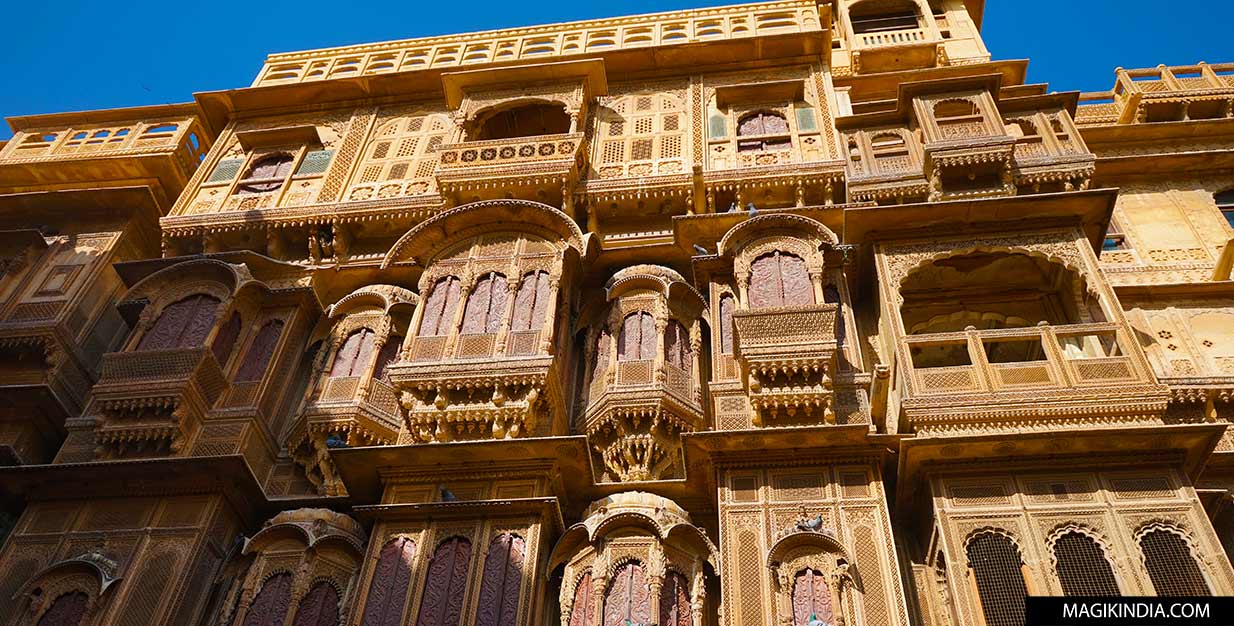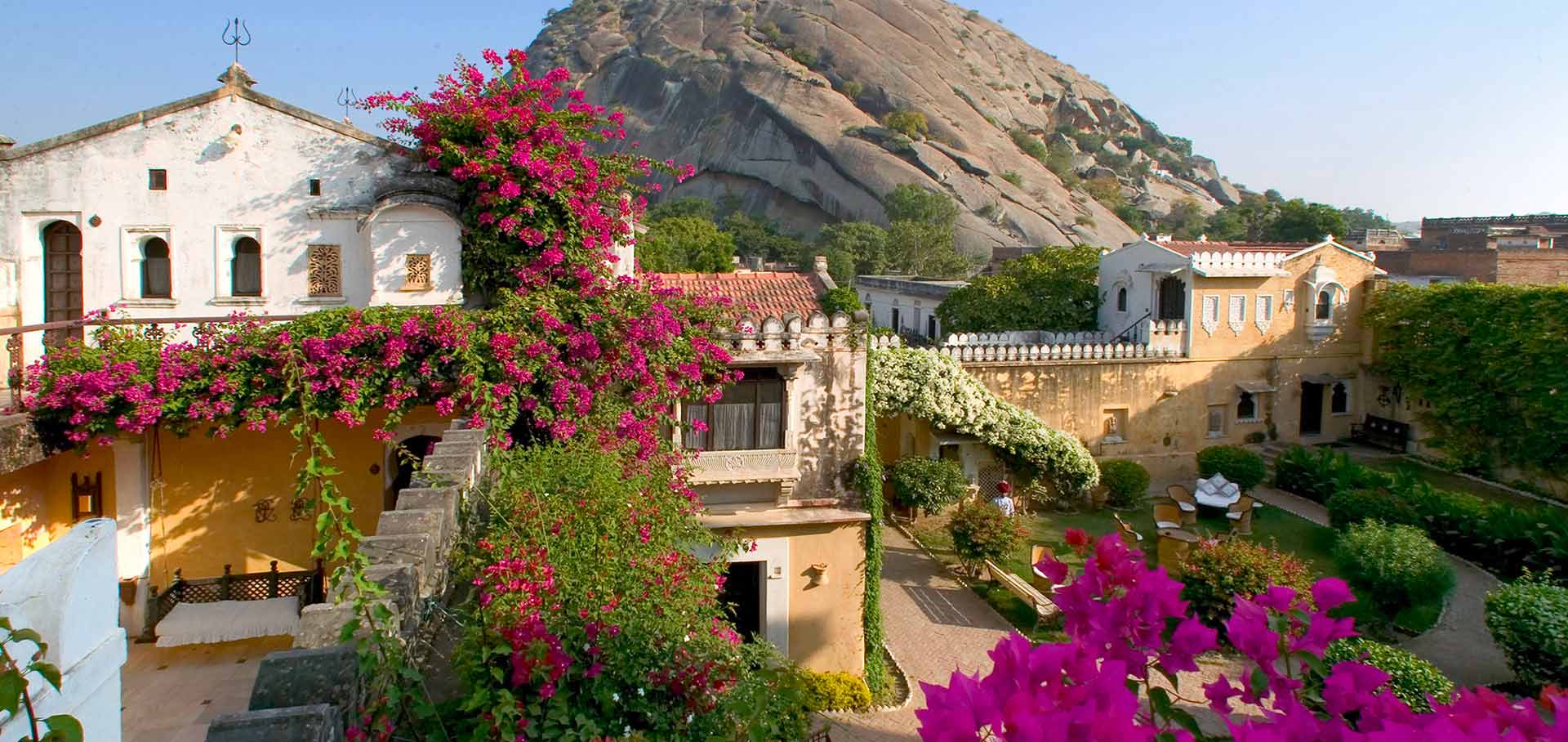
The Rawlas, discreet jewels of Rajasthan
Rajasthan is not just about the imposing forts of Chittorgarh, Mehrangarh, or Jaisalmer. Beyond these giants, one discovers a multitude of more intimate structures, such as the Rawlas. These ancient residential forts of the Thakurs (local lords) are true hidden gems. Often nestled in the peaceful countryside of Rajasthan, they reveal a unique and authentic perspective on the history, culture, and architecture of the land of kings.
A Rawla (sometimes spelled “Raola” or “Ravla”) is typically the fortified residence of a Thakur (local chieftain, nobleman) or important landowner, who governed a small territory (a “thikana” or “jagir”) under the authority of a Maharaja. The Rawla served as a residence for the chieftain and his family, a center for collecting taxes, a local court of justice, and also managed the affairs of the community.
The architecture of a Rawla
Although the size and complexity of Rawlas vary, they share common architectural features. Each of these dwellings embodies a hybrid nature, artfully merging defensive functions with residential comfort, reflecting the status of their occupants. The Rawla can therefore resemble a large fortified haveli or a small fort.
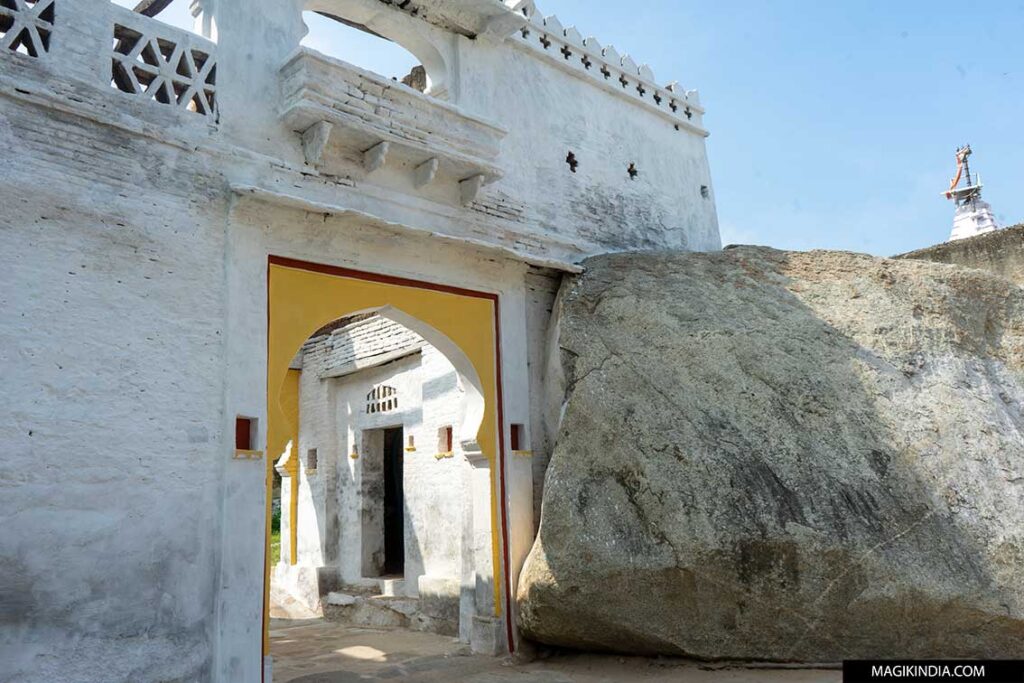
Although less massive than the great royal forts, the Rawlas have thick walls, sometimes watchtowers and strong gates, testifying to the constant need for defense in the fragmented Rajasthan of the time.
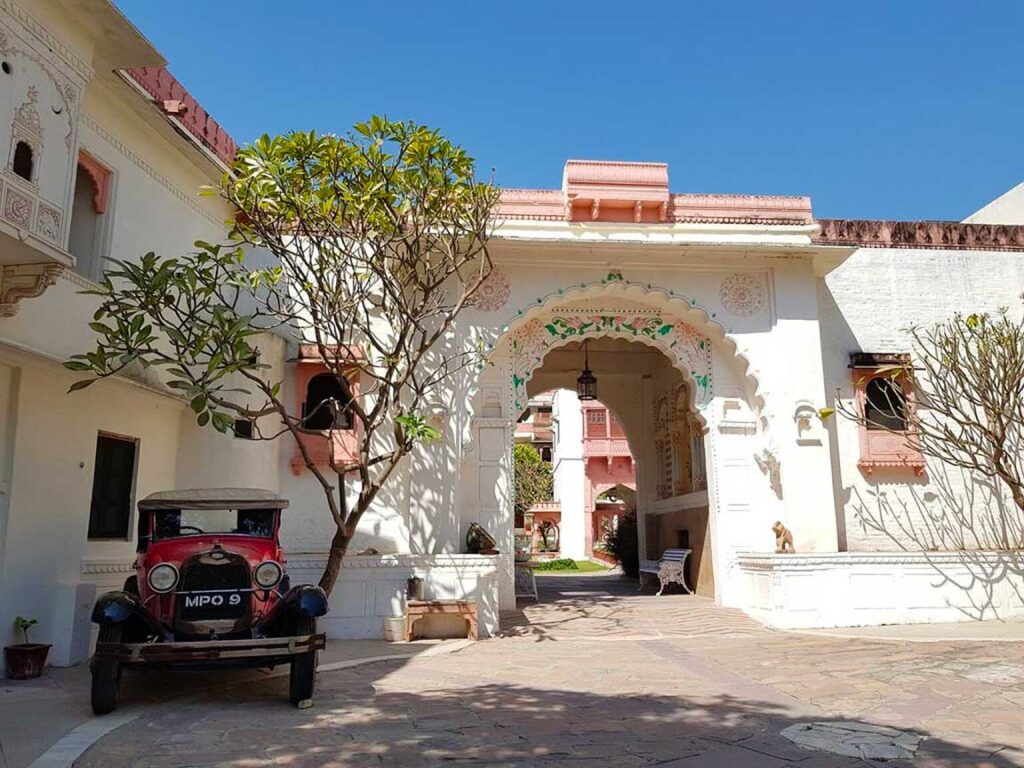
Within the protective walls, the Rawla is designed for family life and administration. It is built around inner courtyards, sometimes with separate residential areas for men (Mardana) and women (Zenana). It includes audience halls (Diwan-e-Aam), private temples, stables, and staff areas.
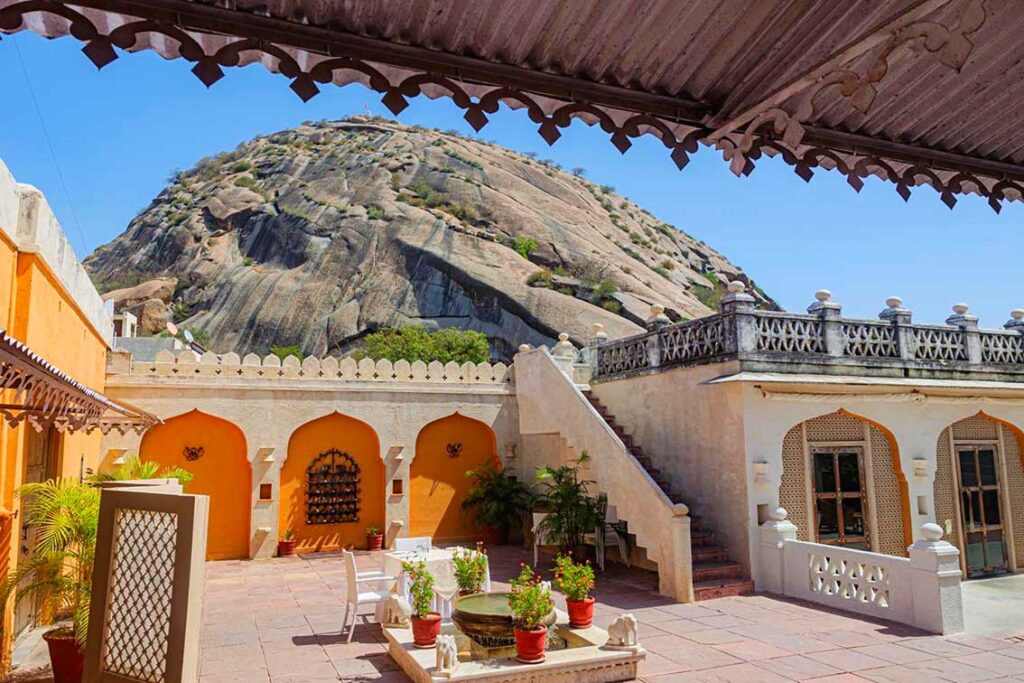
It features typical decorative and functional elements of Rajput architecture such as jharokhas (projecting balconies), chhatris (small domed pavilions) and detailed stone carvings.
Where are these Rawlas located?
The Rawlas are particularly well represented in the regions of Marwar and Mewar (including Pali, Jalore, Rajsamand, Jodhpur). These historical regions of Rajasthan were strongholds of powerful kingdoms and many fiefdoms were established there.
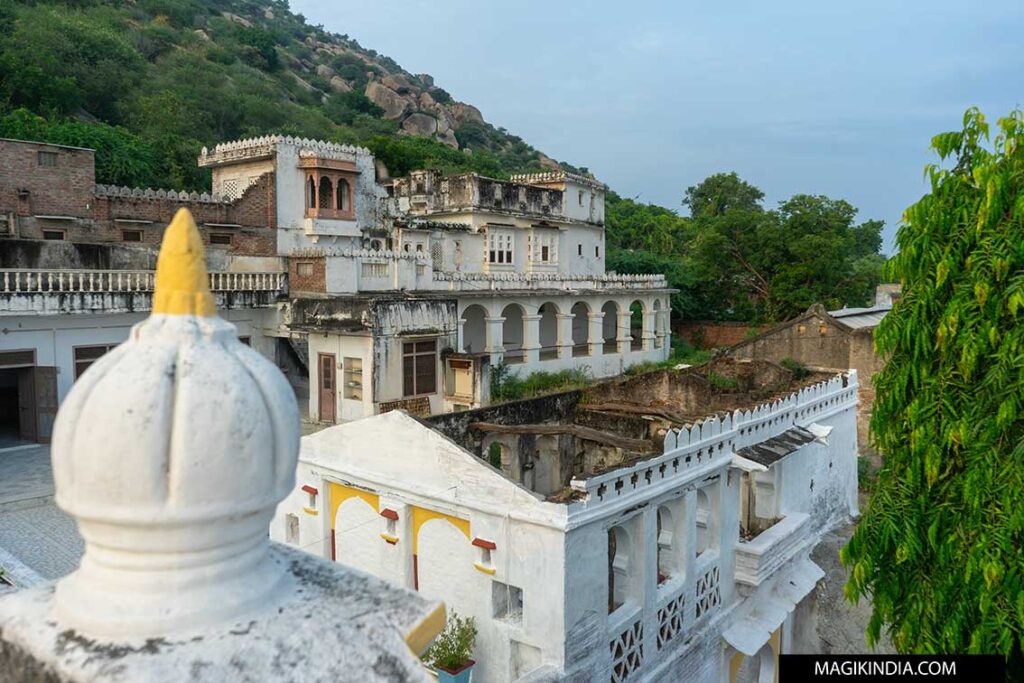
Historically, Rawlas were often located along trade routes where local lords could exercise their authority and collect taxes. The wealth generated by these activities enabled the construction of these residences.
They were also posted at strategic border locations, nestled between the formerly warring kingdoms of Marwar and Mewar, to keep watch on this volatile frontier.
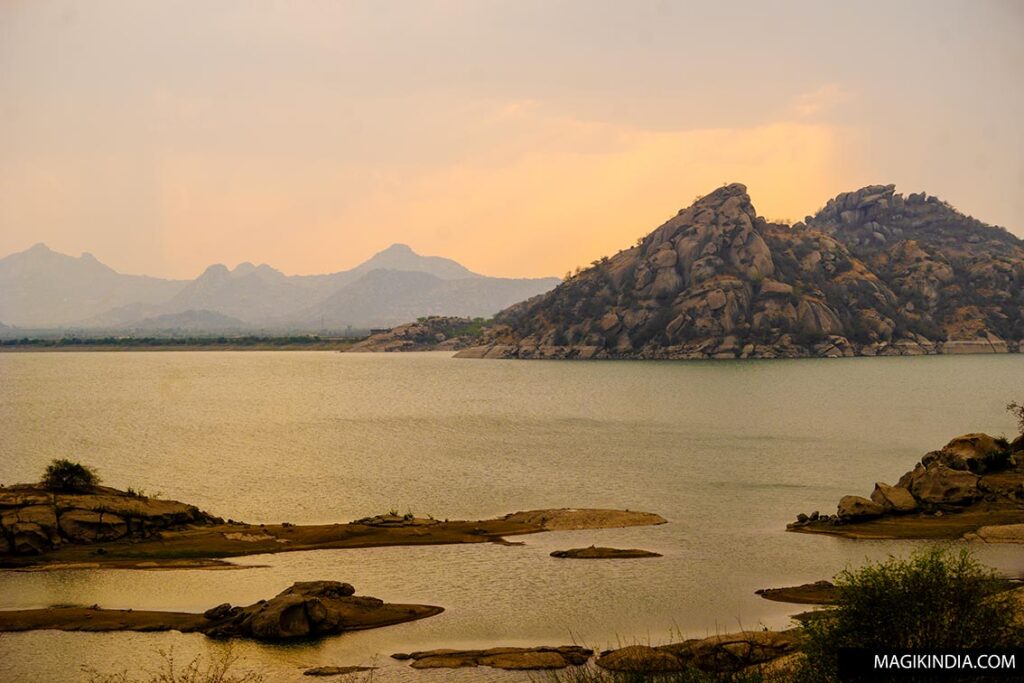
Moreover, the Aravalli Range, which winds through these regions, offered ideal isolation while revealing splendid panoramas. The geographical location of Rawla Narlai (between Jodhpur and Udaipur), Rawla Jojawar (in Pali district), and Rawla Bhenswara (Jalore) is proof of this.
A short list of my favorite Rawlas
Today, many Rawlas have been restored by descendants of the original families and converted into hotels. Staying in a Rawla offers a deep immersion in Rajput culture. It often offers family traditions, authentic local cuisine, and a glimpse into the lifestyle of the nobility of yesteryear.
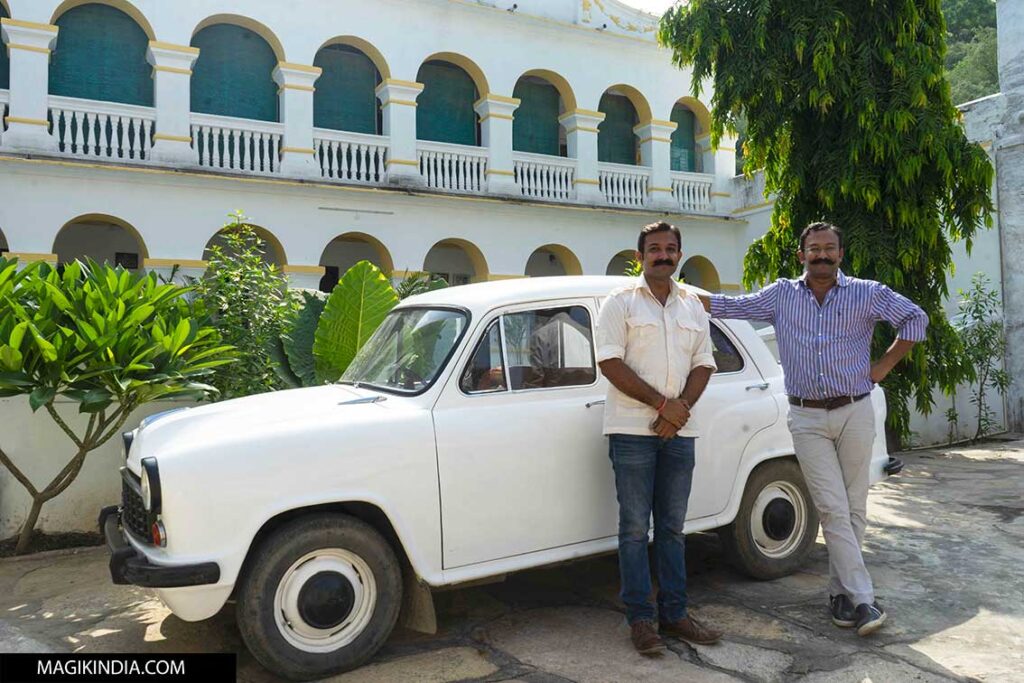
Without a doubt, my absolute favorite is the Rawla Bisalpur. Beyond the beauty of the place, it’s the exceptional kindness of the family who live there that makes it an unforgettable experience. Veer Vinod Singh and Paramvir Singh, the two brothers of the Bisalpur family who opened this boutique hotel in 2019, embody the very essence of Rajput hospitality.
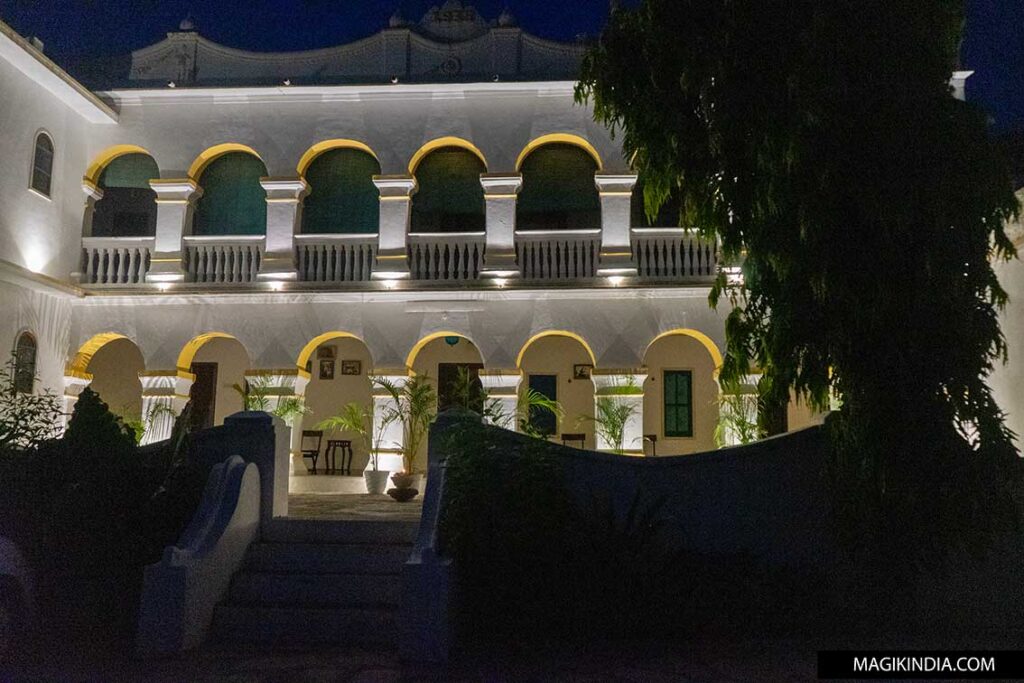
This fort houses four exquisitely appointed rooms located in the former Indo-European-style villa. Built in the 1930s to accommodate family guests, this villa is adjacent to their ancestral 18th-century palace, which is now a charming and historic relic.
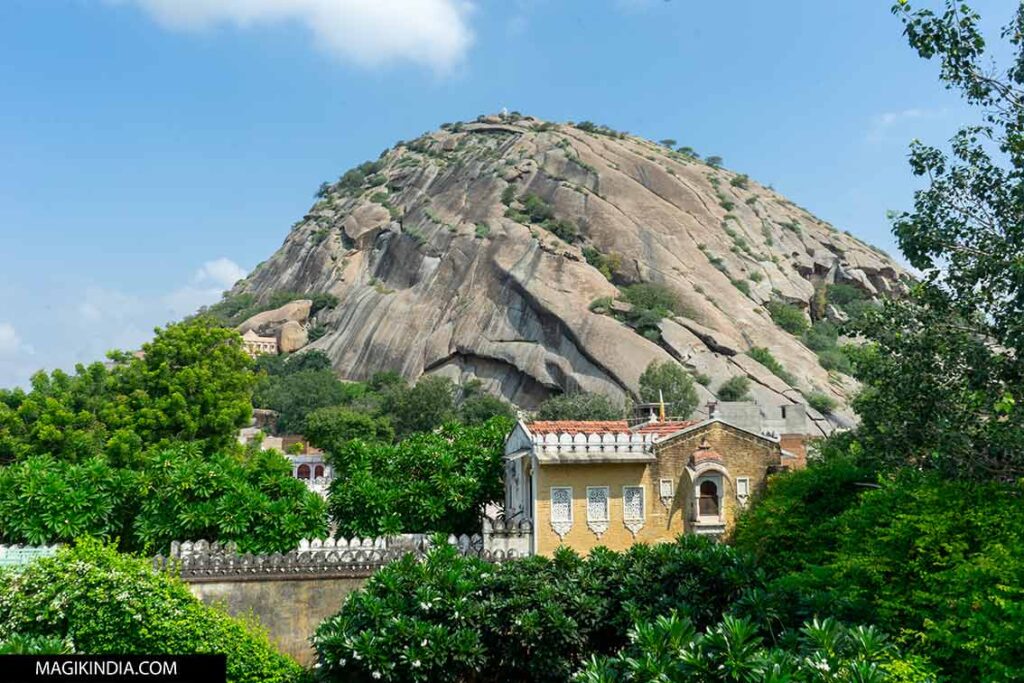
Although less intimate, my second favorite is the Rawla Narlai, one of Rajasthan’s most iconic and renowned Rawlas, transformed into a 5-star luxury boutique hotel. It is ideally located in the heart of Narlai village, nestled against an impressive rocky hill in the Aravalli Mountains.

This is an old residence dating back to the 17th century. It once served as a favorite hunting lodge of the royal family of Jodhpur, who still own it but no longer live there.
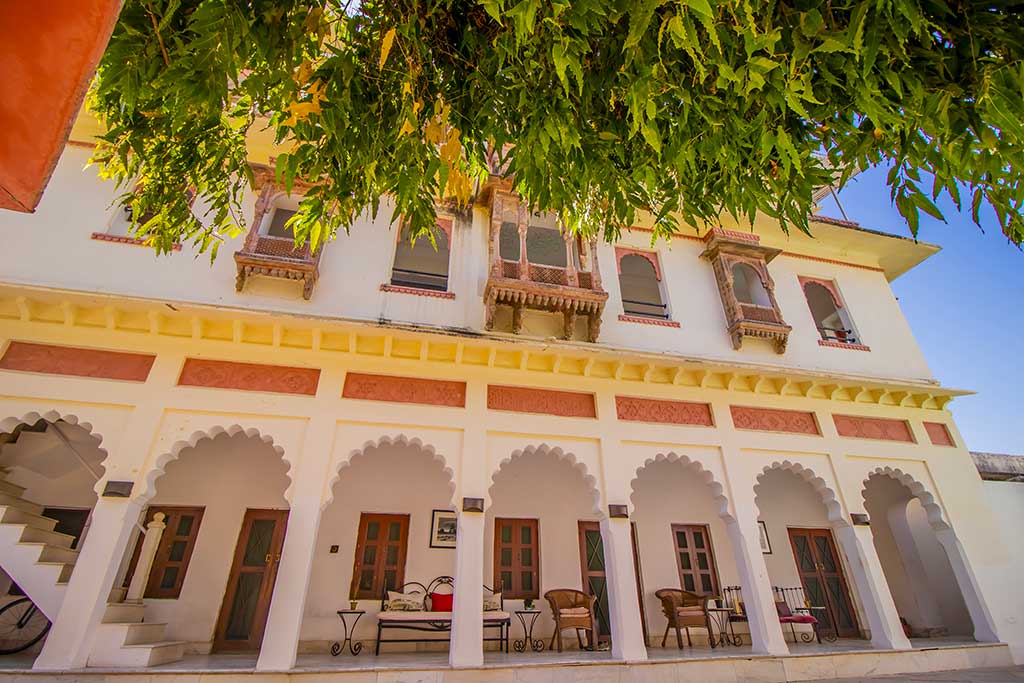
An hour from Narlai, Rawla Jojawar is another example of the irresistible charm of these rural homes. It is a meticulously restored ancestral fort from 1780, originally built by Thakur Shyam Singh ji of the Sonegra Chouhan clan.

Rawla Bhenswara located just a hundred kilometers from Jodhpur, is also worth a visit. Built around 240 years ago by Thakur Jagat Singh ji Rathore (Champawat), the founder of Bhenswara, this unique place invites you to immerse yourself in the warm atmosphere of a house filled with ancient treasures.
Rawlas are a unique aspect of Rajasthan’s heritage. They are an invitation to explore a more authentic, personal Rajasthan, deeply rooted in its history.





